Women’s Role in Society
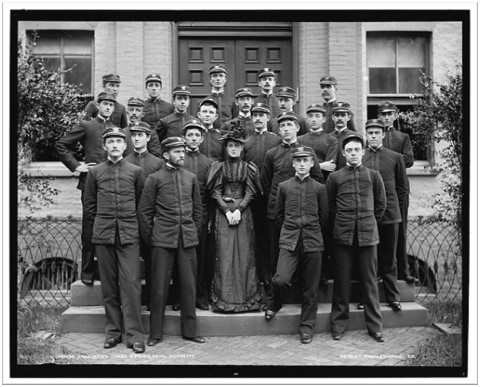
On May 4, 1872, the group detoured from Washington D.C to visit the United States Naval Academy in Annapolis, Maryland. Upon arrival, the delegation was surprised to see women entering government buildings. Kunitake Kume remarked on this, saying the strangest custom he witnessed in America was the relation between the sexes. He had seen husbands serving their wives inside and outside of the household, and intimate dancing between the men and women in public. Just months after their visit, Susan B. Anthony would convince a group of women to cast ballots in the presidential election. Although it would be 50 years before women would be granted the right to vote […]
Emancipation Day
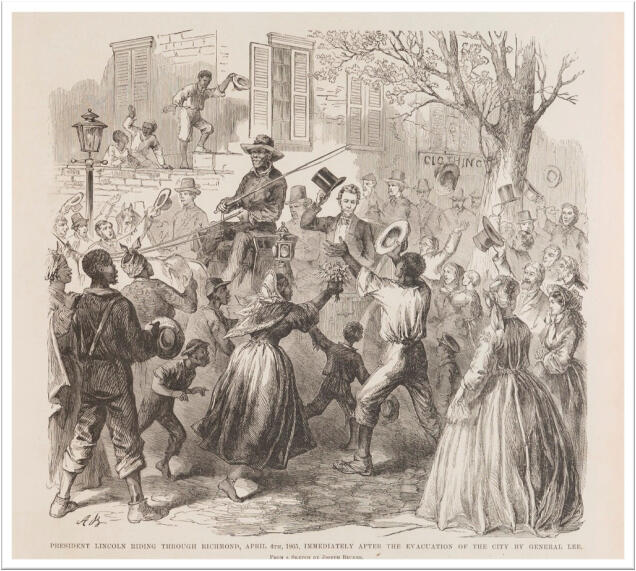
On April 16, 1872, the Japanese delegates arrived in the nation’s capital. Their visit coincided with the 10th anniversary of Emancipation Day, celebrating the signing of the Compensated Emancipation Act by President Licoln in 1862 that freed slaves in the District of Columbia. The streets were filled with parade-goers, as African Americans waved banners, marching bands filled blocks with music, and women rode in carriages in celebration. Upon being received at the White House, the delegation watched a 101-gun salate. Kunitake Kume commented upon the immeasurable accomplishments made by African Americans post-slavery, proof that intelligence was in no way limited by skin color. He surmised that education was a key […]
Ferries and Piers
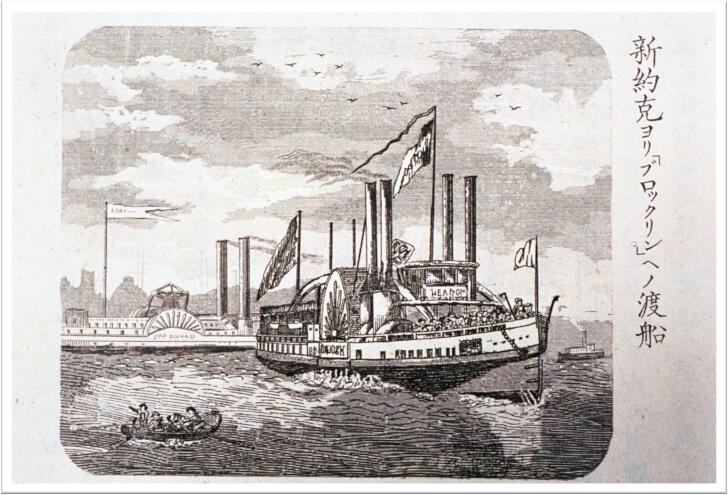
In 1872 New York City was a major port, surrounded by water. As the delegates arrived into the famed metropolis, they marveled at the size and breadth of the city’s commercial ferry and freight vessels. There were so many people, horses, and goods in transit along the Hudson River! Nothing the men read about America could have prepared them for the scale of the United States’ shipping enterprise. The magnitude of the operation took them aback. The delegates were impressed when their carriage was loaded onto a massive ferry, without any need for them to disembark. Kunitake Kume wrote that it was surreal to view waves from a carriage window.
Telegraph
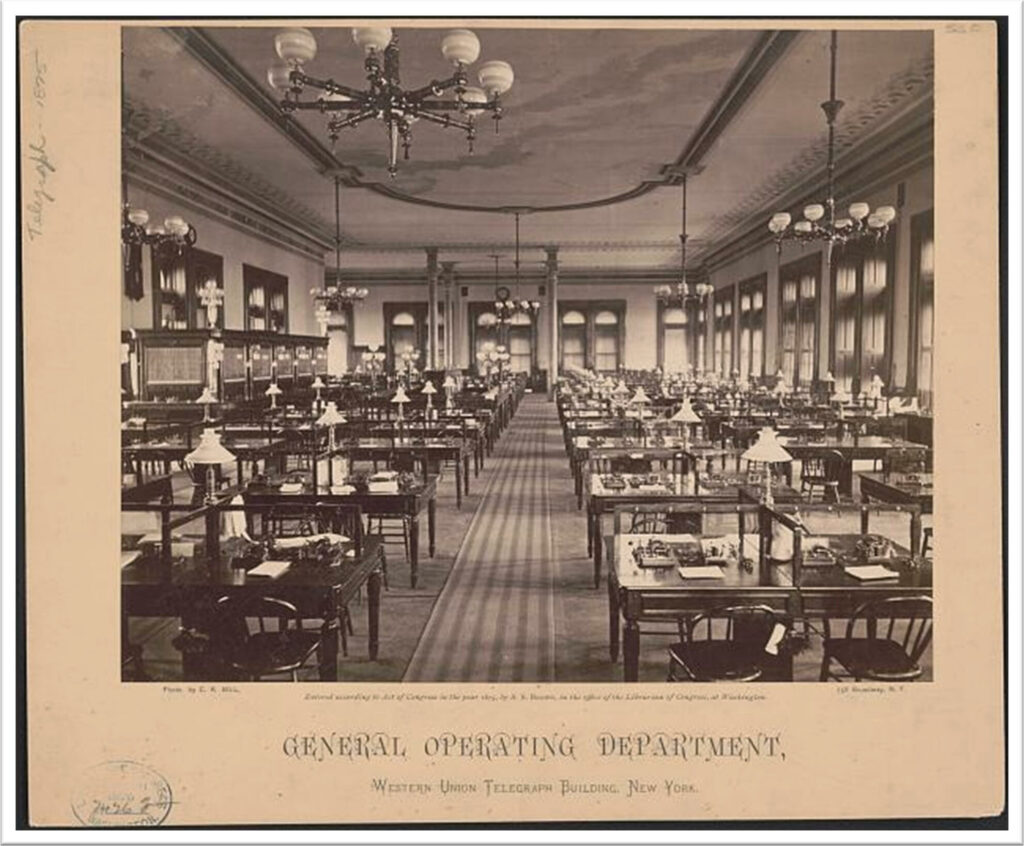
Following the delegation’s visit to the New York Tribune, the group headed to the headquarters of the Western Union Telegraph Company at 145 Broadway Avenue. Inside of the offices men tested out the service. The group received wishes of good fortune along their journey from Western Union offices in Cleveland and Washington D.C. It was wonderful to be able to communicate so quickly from great distances! The telegraph, invented in 1844 by Samuel Morse, had spread to several countries but was not yet popular in Japan. When the delegation returned, they ensured that the network expanded rapidly across the country. In the late 1870’s the Tokyo Central Telegraph Office was […]
Niagara Suspension Bridges
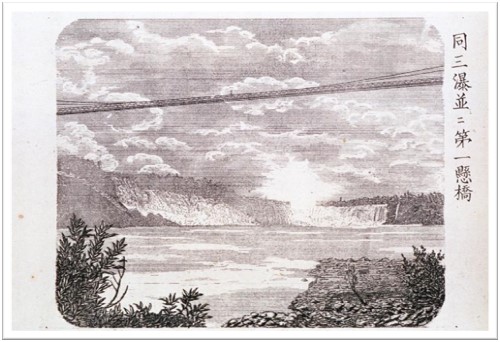
During their stay in New York the delegates made a trip north toward the Canadian border to visit Niagara Falls. Kunitake Kume made detailed descriptions of the falls in his diaries, mentioning the waterwheel and two suspension bridges that had been built over the Whirlpool Gorge downriver. The delegates crossed one of the suspension bridges, high and narrow above the water. Kume exclaimed, “When the bridge shook, we were all terrified!” The first of the suspension bridges, the Niagara Railway Suspension Bridge, was designed by John A. Roebling and completed in 1855. The bridge could support enough weight for trains to cross, previously thought impossible for suspension bridges. It was […]
Street Cars
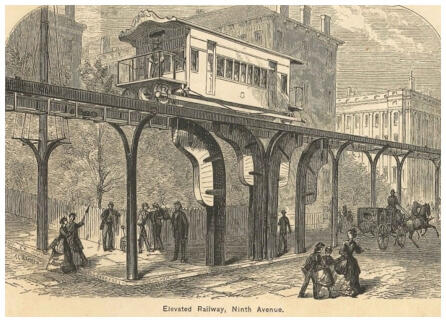
During their stay in New York, the Embassy encountered the newly built streetcars passing along the thoroughfares and above the avenues. In his account of the scene, Kume remarks that, “Trains were also [sic] hurtling along in both directions on an elevated railroad supported on iron pillars more than twenty feet above the street.” For much of the 19th century streetcars in New York City were horse drawn. It wasn’t until the late 1860s that companies began building elevated railways, supported by massive beams and powered by cables that pulled cars along the track. While the above-ground rail lines revolutionized train routes in the city, the cable-powered design quickly proved […]
A.T. Stewart Store
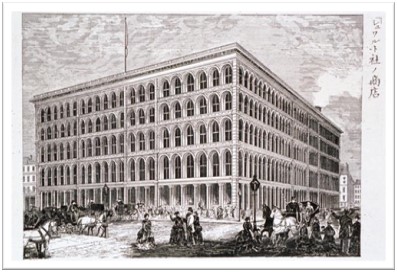
While in New York City the delegates paid a visit to one of the first department stores, the A.T. Stewart Store on Broadway Avenue. The building had large street level windows, allowing light to filter through as people browsed the latest fashions through the glass. It was the advent of modern window shopping. Kume remarked that, “the Stewart’s have provided a magnificent building filled with merchandise in order to stimulate the New York City economy.” However, he and the other delegates were surprised to learn that despite its opulence, the building barely turned a profit. The original A.T. Stewart Store, located at 280 Broadway, was constructed in 1846 of Tuckahoe […]
Saratoga Grand Union Hotel
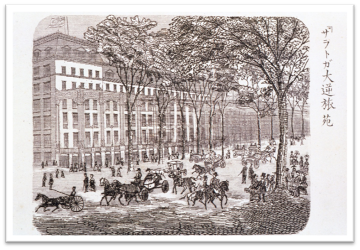
In the middle of June 1872, the Iwakura Mission group journeyed north to Saratoga, New York, where they stayed in the Grand Union Hotel. They were astonished by the scale and grandeur of the building, saying that, “for sheer size it is unmatched among the hotels which we have seen.” This statement would remain true, even as they traveled through Europe and Asia. The great hotel had 1,000 guest rooms, and could seat 1,500 people in its dining hall – possibly the largest dedicated dining hall in the world at the time. At the time of the embassy’s stay the hotel had recently been acquired by Alexander Turney Stewart, the […]
Grand Central Terminal
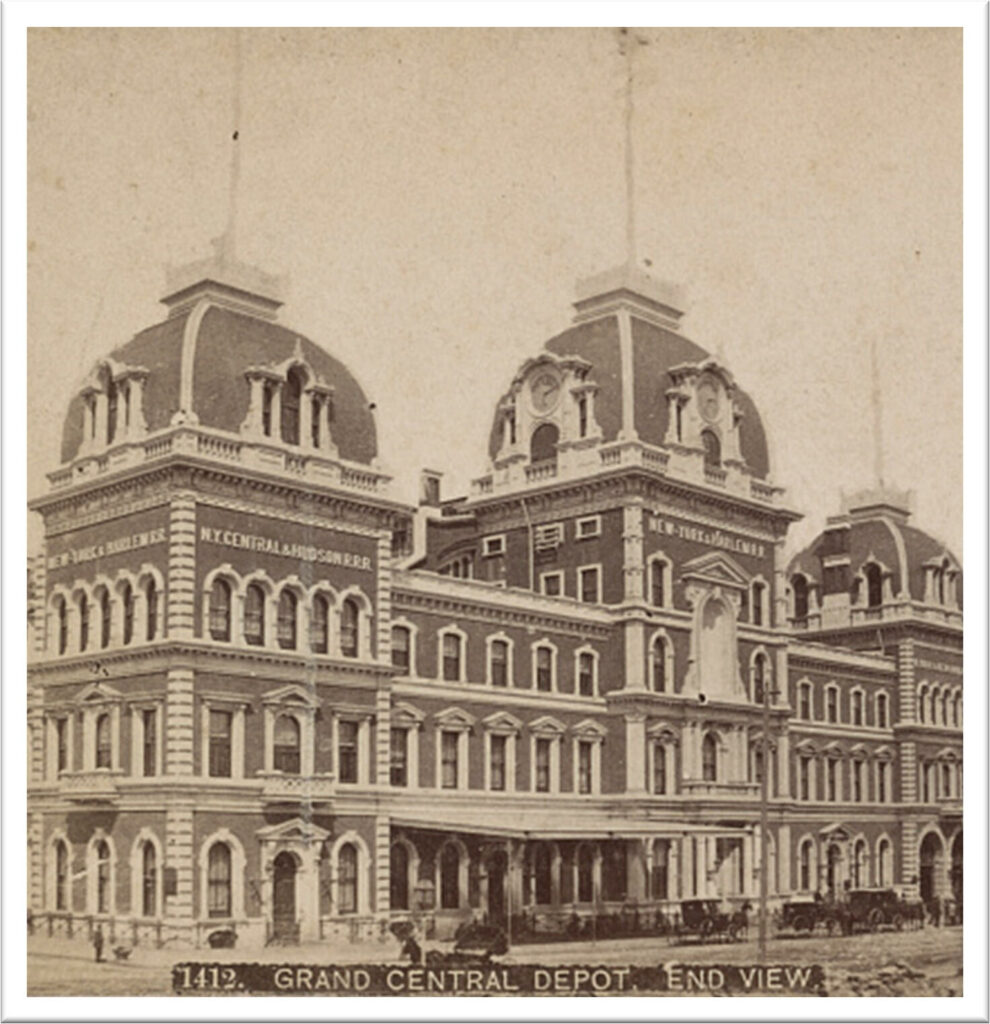
On July 31, 1872, the delegates visited Grand Central Terminal. Kunitake Kume had previously found train depots plain and artless, but the newly constructed Grand Central terminal was beautiful, elegant and momentous. At it’s time of completion in 1871 it was the largest rail facility in the world. The designer Cornelius Vanderbilt (1794-1877), also the founder of Vanderbilt University and the Vanderbilt railroad empire, had set out to make the Grand Central an imposing symbol of glory and power. In many ways he succeeded, and the group was deeply impressed. The visit was another reminder of the importance of railroads in the lives of New Yorkers.
The New York Tribune
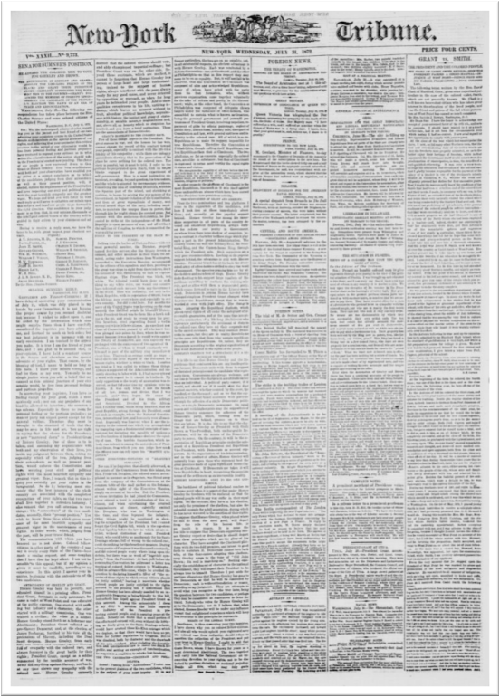
On the last day in July, 1872, the delegates visited the office of the New York Tribune. Newspapers were massively popular with Americans, and Kunitake Kume remarked that in other countries he had never seen papers be so habitual. By Kume’s calculations, at least half of all American citizens read one or more newspaper editions regularly. The daily editions were a powerful force for dispensing cultural news, educating the populace, and encouraging moral behavior. They seemed to reach every corner of the country. After the delegation returned to Japan, newspapers took on a similar fashion, becoming increasingly influential in the sphere of politics and culture. In the 1880s, three of […]
